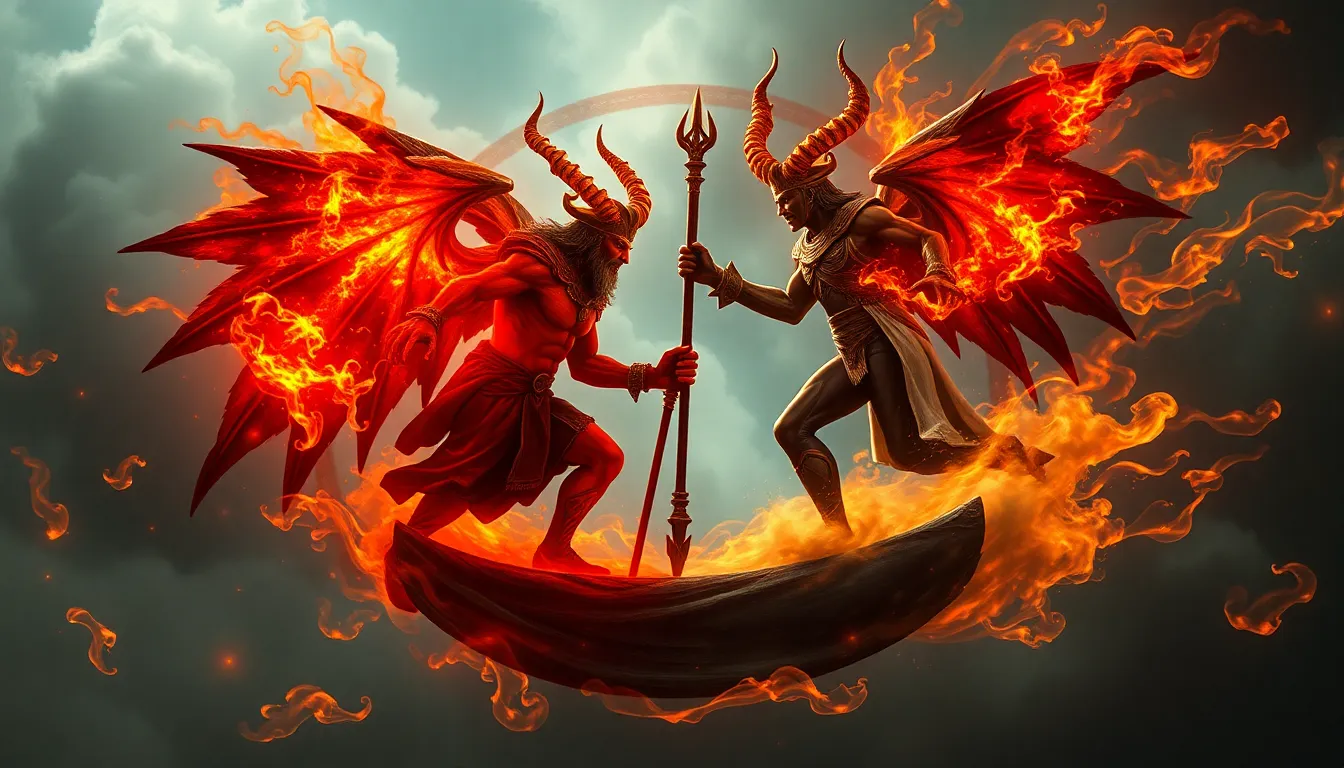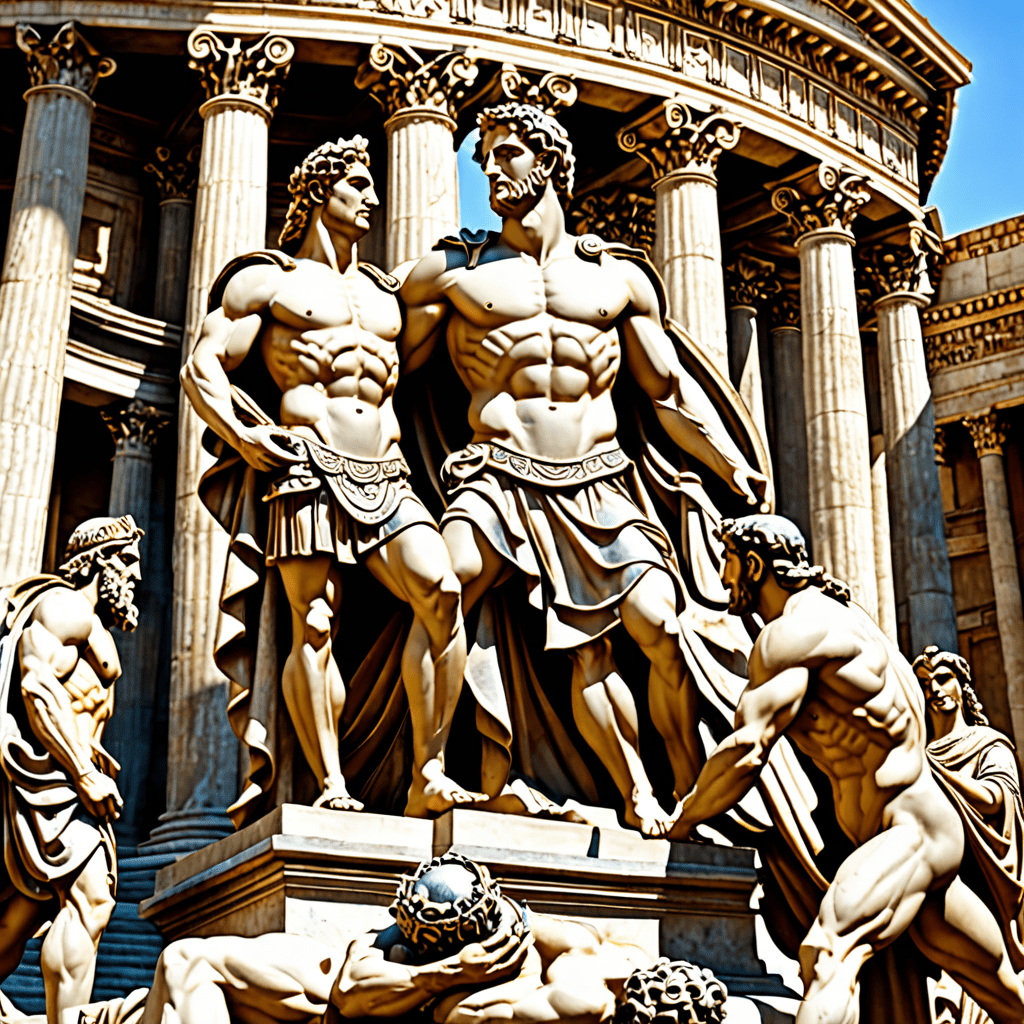Good vs. Evil: How Myths Shape Our Moral Compass
I. Introduction
Good and evil are fundamental concepts that guide human behavior and societal norms. At their core, good is often associated with altruism, kindness, and justice, while evil embodies selfishness, harm, and injustice. These moral dichotomies are not merely abstract ideas; they are deeply rooted in human culture and consciousness.
Myths, as narratives that convey cultural truths and values, play a pivotal role in shaping our understanding of good and evil. They serve as mirrors reflecting our deepest fears, aspirations, and moral lessons. This article will explore the nature of myths, their archetypal representations of good and evil, their moral teachings, and their evolution over time, culminating in their relevance in contemporary society.
II. The Nature of Myths
A. What constitutes a myth?
A myth can be defined as a traditional story that explains a belief, custom, or natural phenomenon. Myths often involve supernatural beings or events and serve to convey moral and ethical lessons. They are foundational to human culture, encapsulating the values and beliefs of a society.
B. Historical context of myths across cultures
Throughout history, myths have appeared in every culture, from the creation stories of ancient civilizations to the folklore of indigenous peoples. These narratives have been used to explain the unexplainable, provide a sense of identity, and instill a sense of order in the universe.
C. The psychological impact of storytelling
Storytelling, particularly through myths, taps into the human psyche. Psychologically, myths can shape personal identity, influence behavior, and provide frameworks through which individuals understand their place in the world. They resonate on an emotional level, making moral lessons more impactful and relatable.
III. The Archetypes of Good and Evil in Myths
A. Common archetypes: Heroes, Villains, and Tricksters
Myths often feature archetypal characters that embody the essence of good and evil. Common archetypes include:
- Heroes: Characters who undertake great quests, often to save others or restore balance.
- Villains: Antagonists who represent chaos, wrongdoing, and opposition to the hero’s goals.
- Tricksters: Ambiguous figures who blur the lines between good and evil, using wit and cunning to challenge norms.
B. Examples from various cultures
Different cultures provide rich examples of these archetypes:
- Greek Mythology: Heroes like Hercules and Odysseus symbolize bravery and virtue, while villains like Hades and Medusa represent the darker aspects of humanity.
- Norse Mythology: The trickster god Loki embodies chaos, challenging the established order of gods like Thor and Odin.
- Eastern Mythology: In Hinduism, figures like Rama represent dharma (moral duty), while Ravana symbolizes adharma (unrighteousness).
C. The symbolism and characteristics of good and evil figures
Good figures in myths often possess traits such as courage, selflessness, and wisdom, while evil figures may be characterized by greed, malice, and deceit. The contrast between these figures serves to highlight moral lessons, guiding audiences toward virtuous behavior.
IV. Myths as Moral Teachers
A. How myths impart moral lessons
Myths function as moral teachers by presenting scenarios that illustrate ethical dilemmas and their consequences. Through the trials and tribulations faced by characters, audiences learn about the virtues of honesty, bravery, and compassion.
B. The role of fables and parables in teaching ethics
Fables and parables, often derived from mythological narratives, provide concise moral teachings. For example, Aesop’s fables communicate lessons through animal characters, making complex moral concepts accessible to all ages.
C. Case studies of myths that shape moral behavior
Several myths have had profound impacts on moral behavior:
- The Good Samaritan: This biblical parable teaches the importance of helping others, regardless of social boundaries.
- The Boy Who Cried Wolf: A fable illustrating the dangers of lying, emphasizing the value of honesty.
V. The Evolution of Good and Evil in Myths
A. Changes in the portrayal of good and evil over time
As societies evolve, so do their myths. The portrayal of good and evil can shift dramatically based on cultural, political, and social changes. For instance, once-celebrated heroes can later be viewed as flawed individuals, reflecting a more nuanced understanding of morality.
B. Modern reinterpretations of ancient myths
Contemporary retellings of myths often reinterpret characters and themes to resonate with modern audiences. This can lead to a more complex portrayal of morality, where heroes may exhibit flaws and villains may have redeeming qualities.
C. The influence of societal changes on moral narratives
Societal changes, such as movements for equality and justice, can reshape the narratives of good and evil, highlighting the need for inclusivity and diverse perspectives in moral storytelling.
VI. The Psychological Basis of Good vs. Evil
A. Psychological theories related to morality (e.g., Freud, Jung)
Psychological theories provide insights into our understanding of good and evil. Sigmund Freud’s theory of the id, ego, and superego illustrates the internal conflict between primal desires and moral constraints. Carl Jung’s concept of archetypes underscores the universal symbols present in myths that resonate with our unconscious minds.
B. The impact of myths on personal identity and beliefs
Myths shape personal identity by providing frameworks for understanding oneself in relation to the world. They influence beliefs about morality, guiding individuals in their decision-making processes.
C. How myths influence our understanding of right and wrong
Myths serve as foundational narratives that help individuals and societies define their notions of right and wrong. They offer examples of moral behavior and its consequences, shaping collective ethical standards.
VII. The Role of Religion in Shaping Moral Myths
A. Comparison of mythological and religious narratives
Mythology and religion often intertwine, with religious narratives frequently borrowing from or building upon existing myths. Both serve to impart moral lessons and provide a sense of purpose and understanding of the universe.
B. The intersection of morality, spirituality, and myth
Spirituality often draws upon mythological themes to explore moral questions. The intersection of moral values and spiritual beliefs reinforces the importance of ethical behavior in both personal and communal contexts.
C. Case studies of religious texts as moral guides
Religious texts, such as the Bible, the Quran, and the Bhagavad Gita, serve as moral compasses for billions of people. They provide narratives that guide ethical behavior, illustrating the virtues of compassion, justice, and forgiveness.
VIII. Cultural Variations in the Concept of Good and Evil
A. Differences in moral frameworks across cultures
Cultural variations significantly influence the definitions of good and evil. What is considered virtuous in one culture may be viewed differently in another, reflecting diverse values and beliefs.
B. How global myths reflect cultural values
Global myths often showcase the unique values of different cultures. For instance, Eastern philosophies may emphasize harmony and collectivism, while Western narratives might focus on individualism and freedom.
C. The impact of colonization and globalization on moral myths
Colonization and globalization have led to the blending and clashing of moral myths. This interaction can result in enriched narratives but may also dilute or overshadow indigenous moral frameworks.
IX. Contemporary Implications of Myths on Morality
A. The relevance of ancient myths in modern ethical dilemmas
Ancient myths continue to provide insights into contemporary ethical dilemmas. Issues such as environmentalism, social justice, and technological advancement often echo themes found in mythological narratives.
B. How popular culture (films, books, games) perpetuates moral narratives
Modern media, including films, literature, and video games, perpetuates moral narratives derived from myths. These stories often reinforce or challenge existing



